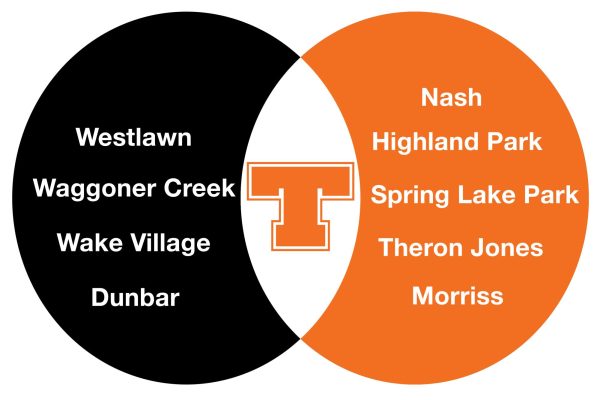What I wish I knew before turning in my choice sheet
Advice and information about high school course selection
Photo Illustration by Sophie Spakes
March 13, 2020
The academic advisors are, to say the least, incredible and helpful women dedicated to guiding you through your highschool career. Unfortunately though, students will occasionally find it difficult to find the right time to meet with them. Not being able to meet with your academic advisors when the choice sheets roll out can be especially difficult.
When you’re stranded and alone with your choice sheet, it can be daunting pondering how you’re gonna fit your beloved extracurriculars and your required credits all into the eight “X”s. Even though the deadline to turn in choice sheets has passed, you still have months left to change your schedule selection if need be. In case you are unsure of your choices, gathered here are a few tips and pieces of information to aid you through the process of changing up your picks.
Endorsements
The broadest of all areas when deciding your fate, an endorsement is an area of study encompassing many career paths. There are five to choose from, each with their own requirements; Arts & Humanities, Multidisciplinary, Business and Industry, Public Service, and STEM.
Note: STEM academy and the STEM endorsement are not the same thing; STEM academy requires that you take one computer and technology class such as Computer Science or Engineering. The STEM endorsement requires that you take Physics.
Here’s the thing, regardless of what each endorsement requires, you will graduate with an endorsement. Even if you’ve never heard of it before or never thought about it, you will graduate with one. It’s not something to worry over unless you plan on getting a specific endorsement.
While endorsements are necessary, you most likely won’t be withheld from going to your dream college if your degree doesn’t have a “STEM” designation on it. Endorsements seem big and scary, but the truth of the matter is that it’s something that does not require much thought.
Credits required for everyone
To graduate from Texas High, you must have a minimum of 26 credits total. Many of these will be given to you without even thinking about it too much. For instance, if you’re in band for two years, you’ll have covered the one physical and one fine arts credit that’s required. All your academic credits will be covered if you follow the usual progression of high school. All you have to do for those is choose which level.
Aside from your core class credits, you’ll sign up for a foreign language. You only need to take said language for two years to receive all credits you need for foreign language. The remaining credits required are whichever CTE courses you’d like. CTE courses are all courses aside from ELA, Science, Mathematics, Social Studies, most Fine Arts, and Athletic courses.
Choosing your alternates
Choosing alternatives isn’t difficult, but it is important to choose alternates that would help you fulfill your credit requirements in the event that you are unable to make it into one of your first choices.
If you’re undecided about your future, thinking about potential careers you’d like to pursue and choosing alternate courses within that range is never a bad idea. It’ll potentially help you learn about the different aspects of the various jobs you are considering.
Degree planning
To help you map out the path you are planning and taking and ensuring you have enough spots for credits, you could make a table or spreadsheet. This lays down the ideas you have for classes you want to take in the future as well as the classes you’ve already taken to get your credits in order.
Something like the following could be of use. It’s just a generic spread filled with generic courses to help convey the idea, adjust the layout according to your needs and experience.
| Required Credits Total | Freshman Year | Sophomore Year | Junior Year | Senior Year |
| English – 4 | Eng I | Eng II | Eng III | Eng IV |
| Math – 3 | Algebra I | Geometry | Algebra II | |
| Science – 3 | Biology | Chemistry | Biology II | |
| Social Studies – 4 | World Geography | World History | US History | Govt./Economics |
| PE – 1 | Foundations of Personal Fitness | |||
| LOTE – 2 | Spanish I | Spanish II | ||
| Fine Arts – 1 | Art I | |||
| CTE Elective – 4 | Engineering Design and Presentation | Computer Programming | Computer Programming II | Child Development |
| Other Electives | ||||
| Total | 8 | 6 | 5 | 3 |
In this chart, all of the required credit spaces have been filled. Your total credits each year should add up to eight, since there are eight periods in total. When you have periods left to fill, you can put whichever classes you’d like in their place.
Overall, the best advice that you could take is to carefully consider the path that you want to take after high school. That could greatly change the courses you take now. If you’re considering changing your schedule, make an appointment with your advisor as soon as possible, and they will do anything they can to assist you. In the meantime, however, familiarize yourself with what you need, what you want, and what you have in regards to your classes.





















